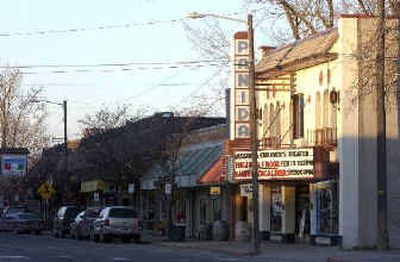Decision postponed on taller buildings

SANDPOINT – Heeding the plea to “go slowly,” the Sandpoint Planning Commission decided Tuesday to table a proposal to increase the height limit on downtown buildings in order to better define where tall buildings could be allowed.
But Panhandle State Bank CEO Curt Hecker hopes the city isn’t too slow for his plans to build a multi-story headquarters for his rapidly growing community bank.
Hecker has plans to build the banking center on the downtown city block that now holds Harold’s IGA grocery story. Harold’s, in business for more than 50 years, is closing its doors on March 1, said Molly Tenney, granddaughter of the store’s namesake and daughter of the current owner, Ralph Bloom.
The family intends to lease the property to Panhandle State Bank, which has been growing at the rapid clip of 45 percent a year for the past two years, and 25 percent a year for the past decade, becoming the largest independent bank in Idaho, according to Hecker.
“We want to build something much more than just a bank,” he told the planning commission. “We want to have a community center in that building, too.”
Hecker had many backers – Realtors, architects and other Sandpoint business people – who said that taller buildings will help keep downtown Sandpoint economically vital.
But detractors, one of whom had a petition with 430 signatures opposed to raising the height limit, expressed concerns about sacrificing Sandpoint’s character and culture for the profits of private enterprise.
“Our skyline should be more trees and mountains than structures,” said Robert Linscott, who was particularly concerned about the impact on the waterfront.
Others agreed that the waterfront and historic downtown blocks deserved special protections, while other areas of downtown could perhaps accommodate the taller buildings.
Planning commissioner Dick Hutter argued for an amendment to the height ordinance that doesn’t ban taller buildings in a certain section of downtown, but designates certain areas where builders could apply for permits to built up to 60 feet in height. Now, under an ordinance passed in 1958, downtown building height is capped at 45 feet.
The ordinance under consideration Tuesday would have allowed for the possibility of the taller buildings on the lakeshore and other areas surrounding the historic downtown.
“I’d like to see the historic area of downtown preserved, but this leaves the lakeshore wide open,” said resident Don Morris.
The developer of the Seasons at Sandpoint, a waterfront condominium development just north of City Beach, currently is seeking a variance to the height limit to allow a fourth story to be added to the project. In addition, Litehouse, the salad dressing company, has offered to build a realistic lighthouse about 60 feet tall on the jetty, also near City Beach.
Those projects, the bank proposal and another condominium project next to the Powerhouse all prompted the city to revisit its height ordinance. At a Jan. 18 public hearing, however, the sentiments were nearly unanimous against changing the height restrictions, prompting the commission to send the proposal back to staff to draft changes requiring builders to go through a conditional use process that requires tall buildings to meet several conditions before getting approval.
However, the commission wasn’t ready Tuesday to send the latest draft to the City Council. By tabling the proposal for a month, the commission bought more time for groups, like the city’s historic preservation committee, to give input.
Said the historic committee’s chairwoman, Gail Lyster; “Let’s really respect our past and hold onto what we do have while growing – gracefully.”